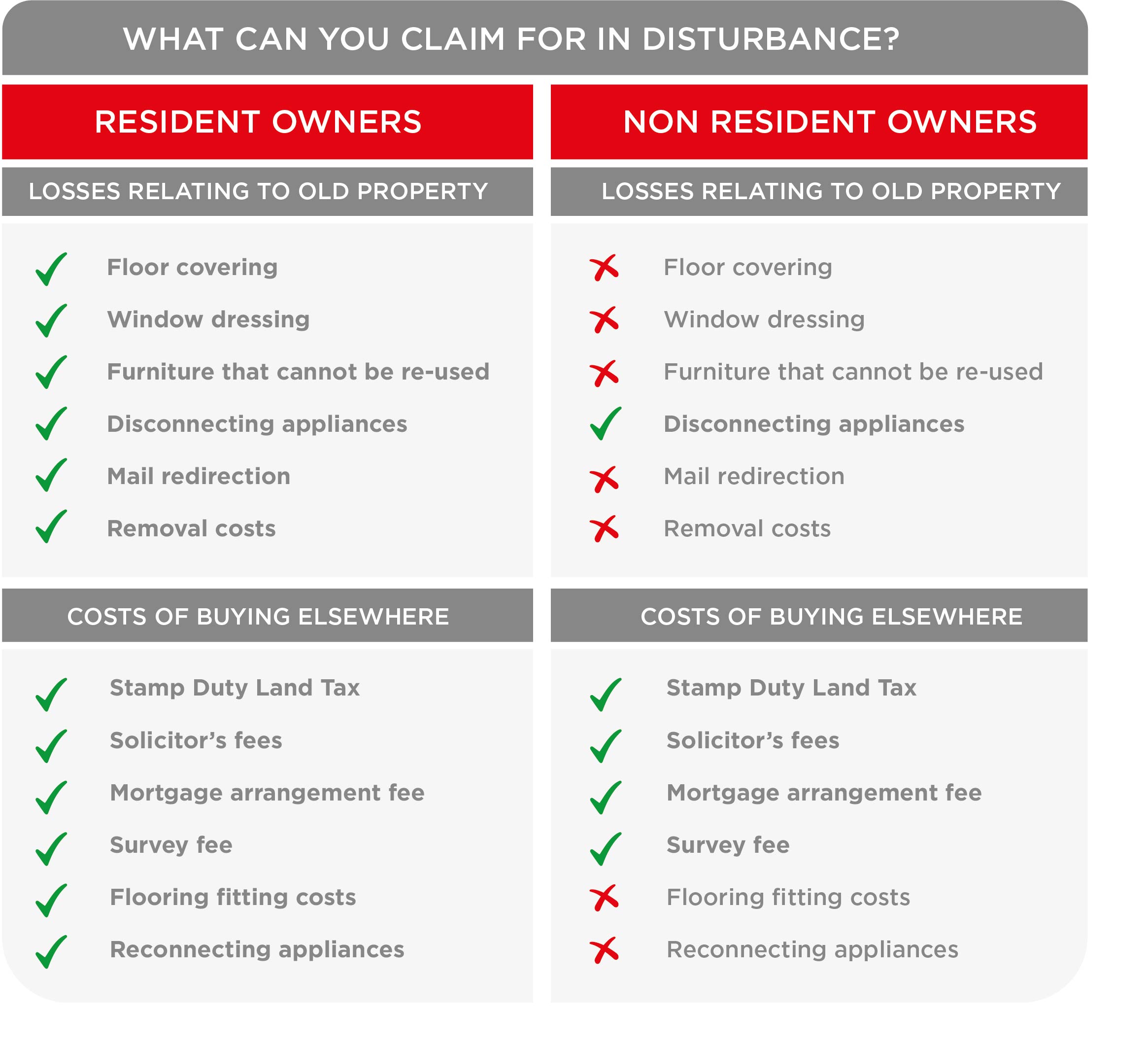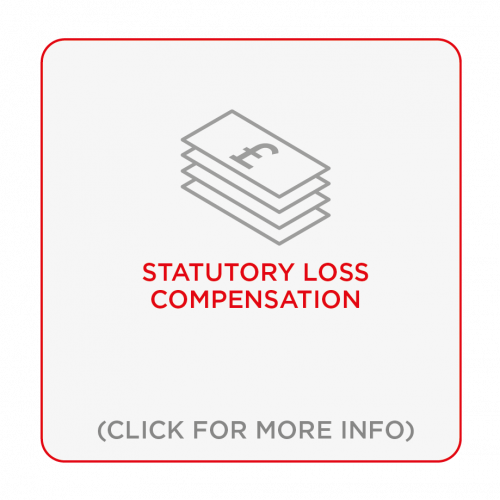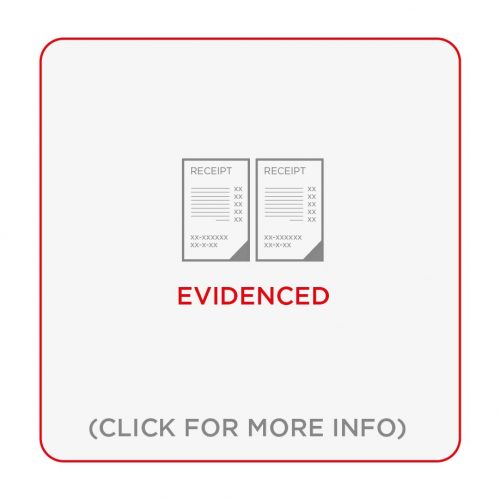VALUATION & NEGOTIATION
...AND YOU MAY ALSO BE ENTITLED TO

First off, let’s be clear to correct one common misunderstanding. Disturbance compensation and the 10% or 7.5% resident or non resident owners receive are completely separate. Qualifying homeowners receive both.
Disturbance compensation is to cover certain costs and losses associated with selling, moving or buying. The table below gives some examples of typical items of claim. It is indicative only so please do speak with us to clarify exactly what you’d be entitled to.

When you can claim
Six years after you have sold or your property has been taken through exercising of Compulsory Purchase Powers, you will lose the right to an Independent binding assessment of the claim. This means if agreement has not been reached, you would have no right to refer the matter to the Independent Lands Chamber.
We have known one landowner (thankfully not a client of ours) lose over £500,000 because he did not agree his claim or refer the matter to the Lands Chamber in time. The acquiring authority reassessed the claim as £nil and there was nothing that could be done about it.
On a pragmatic basis, the Lands Chamber which is also available to resolve a disputed Market Value, is too expensive and time consuming to be worthwhile. It can often take a year to get a judgment and may cost tens of thousands of pounds. Both sides should use the Chamber only as a very last resort.
For non resident owners, their replacement property must also be acquired within one year of when they sold or were dispossessed under the Compulsory Purchase. It must also be an equivalent investment property.
Contract terms
Strictly, disturbance compensation entitlement does not materialise until a property has been lost to Compulsory Purchase. However, most acquiring authorities will suggest that they buy properties on Compulsory Purchase terms. When there is an agreed sale, entitlement to disturbance compensation is then governed by the sale contract. We will always provide some wording to solicitors that we recommend is incorporated into the sale contracts.
Do make sure that your solicitors follow through with this. It is important as we have known some refuse to pay out on items because their contract says something slightly differently.
Equivalence
Disturbance compensation is all about equivalence – making sure you are no better or worse off. For example, stamp duty is typically paid but only up to the amount if you bought somewhere with the same Market Value that you sold at.






